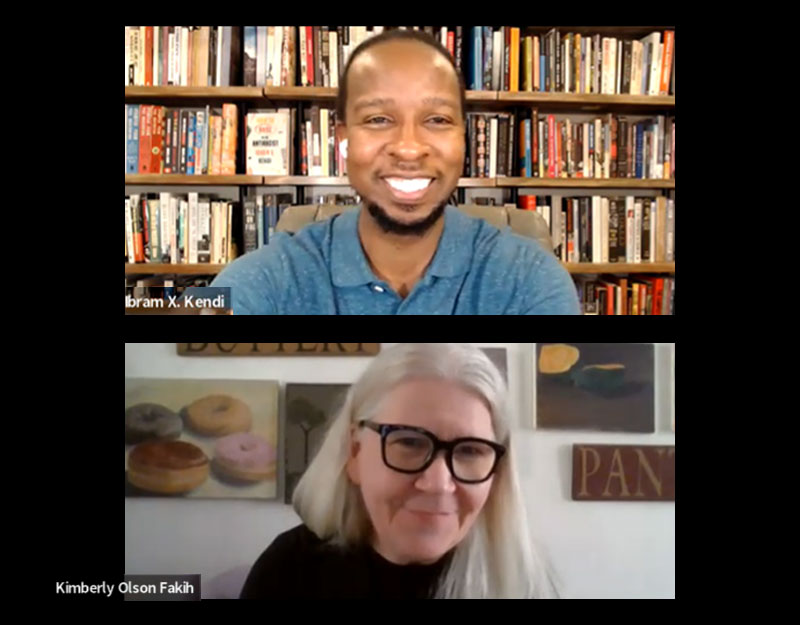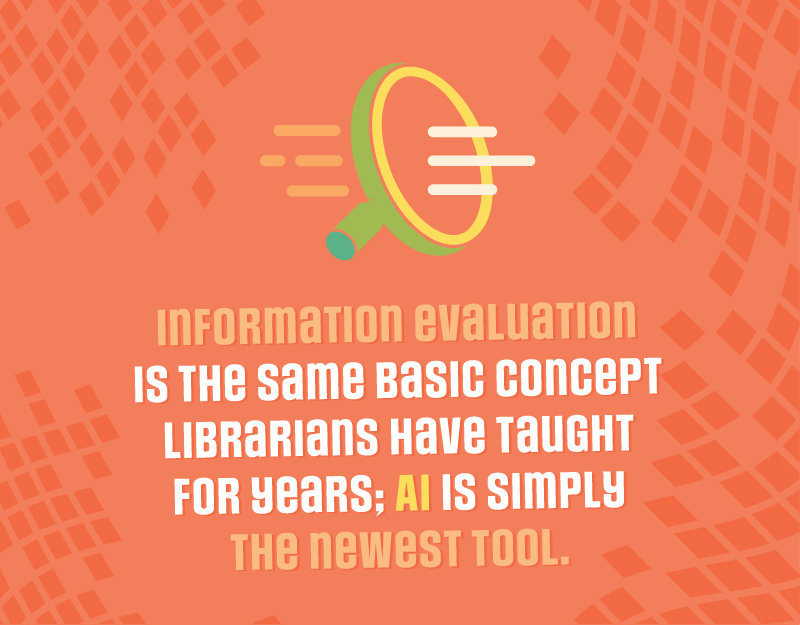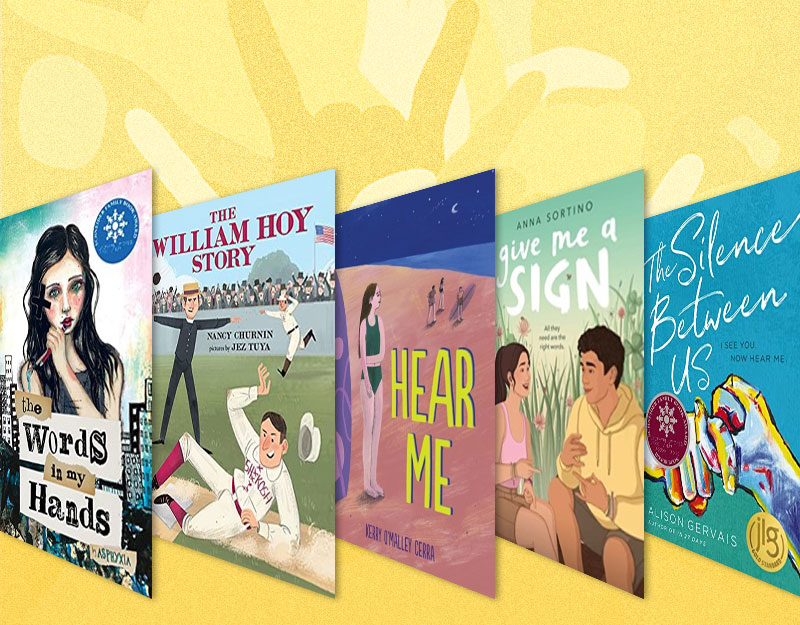Over in the Wetlands: A Hurricane-in-the-Bayou Story
Written by Caroline Starr Rose
Illustrated by Rob Dunlavey
Published by Schwartz and Wade Books, 2015
ISBN: 978-0-449-81016-3
Grades K-8
Book Review
“Over in the wetlands/where the silky mist weaves,/Dragonfly lights on a slender reed.” In the Louisiana bayou, crabs also “scuttle in swells” and “spoonbills stalk.” However, this peaceful setting does not remain so for long; on the first page of Over in the Wetlands, we learn that “[g]entle as a whisper too soft to hear,/a faint breeze hints that a storm draws near.” Rose’s lyrical narrative about the arrival of a hurricane in the bayou borrows some of the forms and structures from “Over in the Meadow,” the 19th century nursery rhyme, but not its playful mood. This deceptively simple fictional picture book envelopes readers in word and image. Rose’s rich language utilizes similes, metaphors, alliteration and imagery to paint a portrait of the bayou and the animals within it. For example, “the wind stirs moss like silent bells.” Dunlavey’s glorious watercolor, pen and ink, and collage illustrations skillfully present the range of habitats within the ecosystem of the bayou. Through his use of color, line, and perspective, the reader experiences the full arrival and impact of the hurricane, as well as the peace that follows in its wake. An author’s note provides important information about wetlands in general and the Mississippi Delta in particular, as well as several digital resources to explore; a “More About the Animals in This Book” section extends readers’ knowledge of the animals introduced in the book. There is no full bibliography revealing the sources used by both the author and illustrator to create the book. Over in the Wetlands will leave adults and children alike thinking about language, wetlands, hurricanes, and habitats; the book is ideal for exploration in language arts, science, and social studies, as well as art.
Teaching Ideas and Invitations
Grades K-Up
Imagery: How does imagery allow us to better understand what the author wants us to see? Read aloud Over in the Wetlands but don’t show your students the illustrations. Have students take notes, jotting down what they see in their mind’s eye. You may need to read the text twice. In small groups or pairs, have students compare and contrast the visual details they hear. Have students illustrate what they see in their mind’s eye based on what they heard using colored pencils or crayons. Compare and contrast their illustrations in their pairs or small groups. Finally, read aloud the book revealing the pictures. To what extent do their illustrations match some of the content of Dunlavey’s illustrations? Have them discuss the role that the language played in painting a picture.
ADVERTISEMENT
ADVERTISEMENT
Similes and Metaphors. Read aloud Over in the Wetlands. Next, have students pour over the book in small groups and identify similes and metaphors. Depending on whether or not you have already explored these literary elements, you may need to use the examples on the first page of the text as a starting point for an explanation. Have students share out the similes and metaphors that they have identified. Next, have them write and illustrate their own sentences that contain a simile or a metaphor.
Grades 2 and Up
Matching Content and Artistic Choices: Meadowlands and Over in the Wetlands Duet. Have your students read both Over in the Wetlands and Tom Yazerski’s Meadowlands. Using a graphic organizer of your choice, have students compare and contrast the information that they learn about wetlands in each book. Next, have them consider the use of watercolors in the illustrations of each. What does water color accomplish compared to other media? Next, have students research another time of ecosystem and have them write and illustrate their own texts. Have students include an artist’s note that discusses why their choice of medium is appropriate for that particular ecosystem.
Science Content: Who Lives in the Wetlands? Give students a graphic organizer that lists “Animals” on one side and “Ecosystem” on the other. As you read the book aloud, have students document the different animals that live in the bayou as well as the different plants and trees that grow there. Using the digital resources below, have students in small groups compare and contrast the animals and plants in this wetlands with the animals and plants in a wetland located in another part of the United States. What’s similar? What’s different? Why? Next, take a field trip to a local wetlands, either salt or freshwater, to identify who lives there and what grows there. Make sure to bring clipboards, tablets or digital cameras, and wildlife identification guides or apps so that students can begin to apply what they have learned in a more authentic hands-on context. Have your class work together to create a wetland mural of your local wetlands to demonstrate their learning and educate others in your school community.
Teaching Vocabulary: Great Verbs. In Bringing Words to Life: Robust Vocabulary Instruction (2002), Beck, McKeown, and Kucan discuss how valuable it is to take an accessible text with rich vocabulary and use it as the basis for authentic vocabulary instruction. On your own or with your teaching team, review the many rich verbs used in Over in the Wetlands, such as: pelting, frothing, churns, snarls, and grumbles. Create kid-friendly definitions to use with your students, and use this book to launch a discussion of interesting verbs. Have students writing short vignettes using some of these interesting verbs.
Science and Literacy: Writing about Weather. After reading the book together, ask your students what they know about hurricanes. If you live in a hurricane-prone area, your students may know a lot about hurricanes. If not, read Melissa Stewart’s Hurricane Watch. If you work with older students, use Seymour Simon’s Hurricanes and/or some of the digital resources listed below instead. Discuss how the author and the illustrator conveyed an understanding of the hurricane to the reader through words and images. Next, have students research a weather event of their choosing, such as a blizzard or drought. Have them use their new knowledge to create a fictional picture book that demonstrates what animals do to survive that weather experience, to showcase their adaptation to their environment. Share these books with younger members of your school community if possible.
Grades 3 and Up
ADVERTISEMENT
ADVERTISEMENT
Social Studies and Science Reading Duet and Persuasive Writing: Experiencing a Hurricane in the Louisiana Bayou. Read Over in the Wetlands aloud to your class, and have students list all the ways in which the animals and the other living things in the ecosystem (water, trees, reeds and grasses) weather the storm. How are they adapted for survival in such a storm? Next, read aloud the fictional picture book A Place Where Hurricanes Happen. What are some of the ways that humans have altered their environment to help them survive hurricanes? What ways have human impact made the environment less safe during a hurricane? What are some of the strategies humans use to weather the storm? Are humans less able to survive the storm than the surrounding animals, and why? Have your students consider these questions and perhaps write a persuasive piece arguing who is better able to withstand a hurricane, humans or animals.
Social Studies and Science: Altering the Mississippi Delta. The author’s note of Over in the Wetlands details the very specific ways in which the Mississippi Delta has been damaged by human industry. What missteps have we taken in altering the Misssissippi Delta? Have students explore some of the digital resources listed below. What is the damage that has been done? What are the implications of that damage for people and animals living far beyond the Delta? What are some of the ways that scientists and local communities are trying to restore the wetlands? What else needs to happen? Have students research in small groups and create plans for preventing further destruction of these important wetlands. You might want to add a local connection here. What is happening in your local wetlands? How is it impacting the safety and health of your community? What needs to be done to protect your wetlands?
Bibliograhies: As Necessary in Fiction as Nonfiction? Over in the Wetlands is a work of fiction; the publisher has labeled it as such, and the event is a composite of what could happen during a hurricane. But this isn’t a work of fiction that just conveys a set of experiences. It is really informative. When we read fiction, we often do so in order to be transported into a fictional character’s “lived” experiences; we explore characterization and plot, we take pleasure in literary elements that add beauty to the work. But to what extent do we expect to learn information from fiction? And if fiction is “informational fiction,” to what extent should the reader expect a bibliograhy of source material in the same way s/he does when reading nonfiction? Should all fiction that involves research – contemporary realistic, historical fiction, and science fiction – have a bibliography? Is it problematic that Over in the Wetlands does not have a full bibliography? Have your students debates this issue, and then put their beliefs into practice in their own writing over the course of the year.
Grades 5 and Up
Critical Literacy
Endanged Wetlands Outside the Narrative. The author of this picture book chose to write a story that provides a “window” into the ways in which animals in the bayou have adapted to survive a hurricane. Hurricanes are dangerous and violent storms, and animals’ ability to survive such extreme weather is noteworthy and fascinating. However, in the author’s note, Rose reveals that over one third of the endangered species in the United States live in wetlands; our wetlands are disappearing rapidly due to development. Why did the author choose to include this information? Why is it in the afterward and not the primary narrative? Why write a relatively simple book about a hurricane when the very subject of the book, and the creatures that live within it, are in jeopardy? How would this book be different if she did not include that information at all? Explore the links included in the author’s note, as well as other digital resources and books listed below in order to learn more about wetlands. Students can create podcasts to share with younger members of your school community, and/or to educate members of your larger community to take action and preserve nearby wetlands.
Further Explorations
Online Resources
Caroline Rose Starr
http://carolinestarrrose.com/
Rob Dunlavey
http://www.robd.com/pages/portfolios/books/books_101.html
Wetlands Resources
Environmental Protection Agency: Wetlands
http://water.epa.gov/type/wetlands/index.cfm
America’s Wetland Foundation
http://americaswetland.com/
Defenders of Wildlife: Wetlands
http://www.defenders.org/wetlands/basic-facts
World Wildlife Foundation: Wetlands
http://www.worldwildlife.org/habitats/wetlands
National Wildlife Federation: What is a Wetland?
https://www.nwf.org/Kids/Ranger-Rick/Animals/Mixture-of-Species/What-Is-A-Wetland.aspx
The New York Times: Wetlands
http://topics.nytimes.com/top/news/science/topics/wetlands/index.html
Louisiana-Specific Wetlands Resources
NPR: “In Louisiana, Rebuilding Mother Nature’s Storm Protection: A Living Coast”
http://www.npr.org/2015/08/08/430059658/in-louisiana-rebuilding-mother-natures-storm-protection-a-living-coast
Atchafalaya Basinkeeper
http://basinkeeper.org/
Louisiana Coastal Wetlands Planning, Protection and Restoration Act
http://lacoast.gov/new/
Restore the Mississippi River Delta
http://www.mississippiriverdelta.org/
Hurricanes
National Hurricane Center, NOAA
http://www.nhc.noaa.gov/
Hurricanes, FEMA
http://www.ready.gov/hurricanes
NASA: Hurricanes
https://www.nasa.gov/mission_pages/hurricanes/main/index.html
Hurricanes, National Geographic
http://environment.nationalgeographic.com/environment/natural-disasters/hurricane-profile/
PBS, Nova: Hurricanes and Climate Change
http://www.pbs.org/wgbh/nova/earth/hurricanes-climate.html
Live Science: Hurricanes
http://www.livescience.com/topics/hurricanes/
Hurricanes, New York Times Topic
http://topics.nytimes.com/top/reference/timestopics/subjects/h/hurricanes_and_tropical_storms/index.html
Hurricane Katrina, New York Times Topic
http://topics.nytimes.com/top/reference/timestopics/subjects/h/hurricane_katrina/index.html
Miami Museum of Science: “Hurricanes”
http://www.miamisci.org/hurricane/index.html
Books
Wetlands
Benoit, P. (2011). Wetlands. Scholastic.
Sill, C. (2008). Wetlands. Ill. by J. Sill. Peachtree.
Weaver, J. (2007). Wetlands Journey. National Geographic.
Yezerski, T. (2011). Meadowlands. Farrar, Strauss, Giroux.
http://classroombookshelf.blogspot.com/2011/04/meadowlands-wetlands-survival-story.html
Hurricanes
Simon, S. (2007). [Smithsonian]. Hurricanes. Collins.
Stewart, M. (2015). [Let’s Read and Find Out]. Hurricane watch. Ill. by T. Morley. Harper Collins.
Zelch, P. (2010). Ready, set, wait. What animals do before a hurricane. Sylvan Dell Publishing.
Hurricane Katrina
Watson, R. (2010). A place where hurricanes happen. Ill. by S. Strickland. Random House.
Filed under: Fiction Picture Books, Picture Books
About Mary Ann Cappiello
Mary Ann is a professor of language and literacy at Lesley University. A former public school language arts and humanities teacher, she is a passionate advocate for and commentator on children’s books. Mary Ann is the co-author of Teaching with Text Sets (2013) and Teaching to Complexity (2015) and Text Sets in Action: Pathways Through Content Area Literacy (Stenhouse, 2021). She has been a guest on public radio and a consultant to public television. From 2015-2018, Mary Ann was a member of the National Council of Teachers of English's Orbis Pictus Award for Outstanding Nonfiction (K-8) Committee, serving two years as chair.
ADVERTISEMENT
ADVERTISEMENT
SLJ Blog Network
Further Predictions! Everything That ISN’T Newbery/Caldecott 2025
Hilda and Twig | This Week’s Comics
Wednesday Roundup: Pointing at Poetry
The Seven Bills That Will Safeguard the Future of School Librarianship
Shakespeare, but Make it Queer!: Retelling a Classic Play and My Love/Hate Relationship with William Shakespeare, a guest post by Emma K. Ohland
Gayle Forman Visits The Yarn!
ADVERTISEMENT








